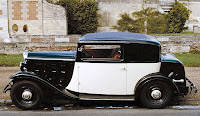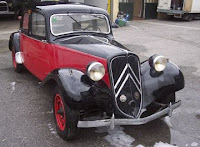 |
| 1933 Citroen Rosalie Coupe 15CV |
Citroën | Car Review | Citroën is the name of a French automaker. Citroën is a major French automobile manufacturer, part of the PSA Peugeot Citroën group, founded in 1919 by French industrialist, André-Gustave Citroën. Citroen was the first automaker to mass-produced outside the U.S. and the origin of the modern concept of creating a network of sales and services that complement the car. In eight years Citroën has become the largest European car manufacturer and the fourth in the world.
 |
| 1920 Citroen Type A |
 |
| 1940 Citroen |
André Citroën built armaments for France during World War I and after the war he had a factory and no product. In 1919, the business started to produce automobiles, beginning with the conventional Type A. The Type A was designed by Jules Salomon, Chief Design Officer from Le Zèbre.
Demonstrating extraordinary toughness, a 1923 Citroën that had already travelled 48,000 km was the first car to be driven around Australia. The car, a 1923 Citroën 5CV Type C Torpedo, was driven by Neville Westwood from Perth, Western Australia on a round trip from August to December 1925. The car is now fully restored and in the collection of the National Museum of Australia.
 |
| 1950 Citroen Light |
The cars were initially successful in the market, but soon competitors - who still uses a wooden structure for their bodies, introduces new body designs. Citroën did not redesign the bodies of their cars. Citroën sold in large quantities, while not changing the design of the body, but the car's low price was the main selling point and Citroën experienced heavy losses. [ Car Sales ]

